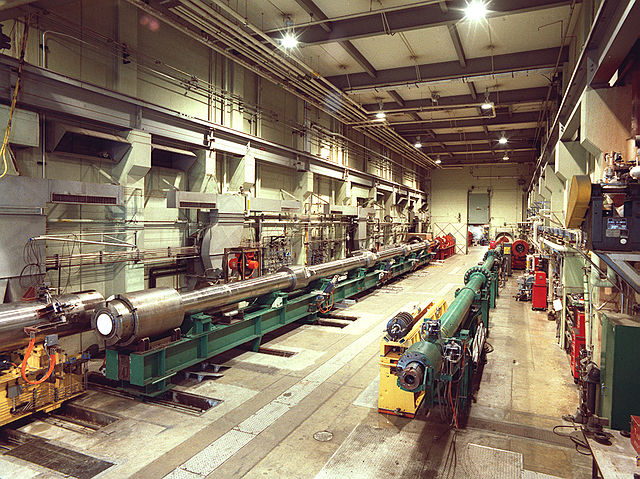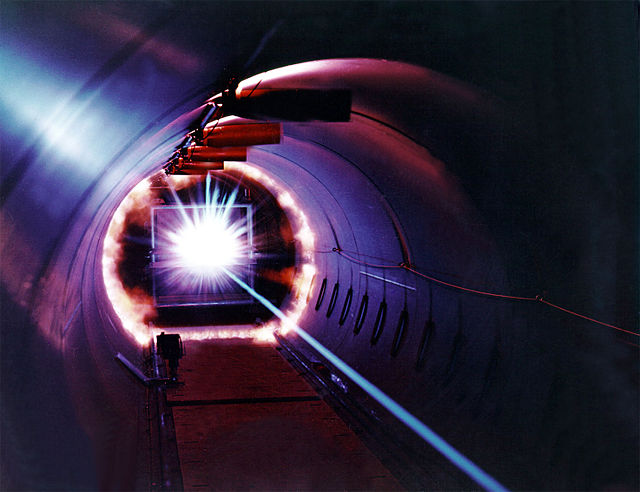The light-gas gun is an apparatus for physics experiments. It is a highly specialized gun designed to generate extremely high velocities. It is usually used to study high-speed impact phenomena, such as the formation of impact craters by meteorites or the erosion of materials by micrometeoroids. Some basic material research relies on projectile impact to create high pressure; such systems are capable of forcing liquid hydrogen into a metallic state.
A light-gas gun at Rice University. Using hydrogen gas and powered by a shotgun shell, it achieves a velocity of 7 km/s. Used during the development of the Fermi Gamma-ray Space Telescope shield.
Two light-gas guns at Arnold Air Force Base's Hypervelocity Ballistics Ranges.
In this Kinetic Energy Weapon test, a seven-gram Lexan projectile was fired from a light-gas gun at a velocity of 23,000 feet per second (7,000 m/s; 16,000 mph) at a cast aluminum block.
Hypervelocity is very high velocity, approximately over 3,000 meters per second. In particular, hypervelocity is velocity so high that the strength of materials upon impact is very small compared to inertial stresses. Thus, metals and fluids behave alike under hypervelocity impact. An impact under extreme hypervelocity results in vaporization of the impactor and target. For structural metals, hypervelocity is generally considered to be over 2,500 m/s. Meteorite craters are also examples of hypervelocity impacts.
The "energy flash" of a hypervelocity impact during a laboratory simulation of what happens when a piece of orbital debris hits a spacecraft in orbit




